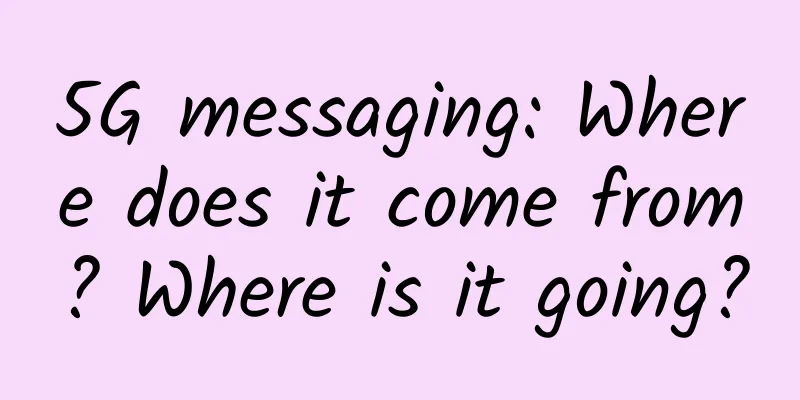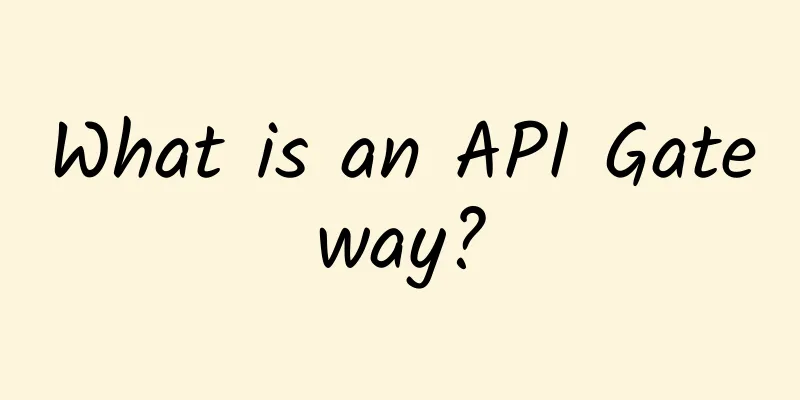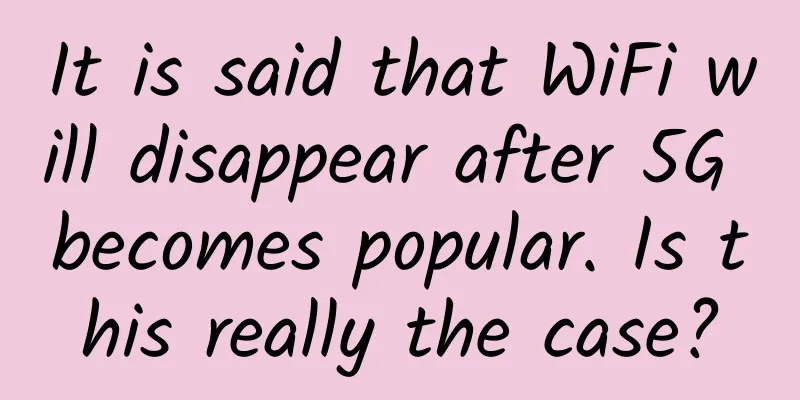5G messaging: Where does it come from? Where is it going?

|
On December 3, 1992, Neil Papworth, a 22-year-old communications engineer, used a computer to send the 15-character message "Merry Christmas" to a 2-kilogram portable phone, Orbitel 901, through the British GSM network. This was the first text message in human history. Later, with the rapid popularization of GSM networks, SMS entered the fast lane of development in 1994. In 2012, Chinese mobile phone users sent a record 900 billion text messages, writing the most glorious page in the nearly 30-year history of SMS. After 2012, mobile Internet instant messaging platforms represented by WeChat dethroned SMS, but enterprise-to-individual messaging services such as verification codes, change notifications, and membership services have maintained steady growth. Nevertheless, with the continuous emergence of new scenarios, new business forms, and new models of information consumption, traditional SMS services can no longer meet the higher quality and more colorful information communication needs of the majority of users.
5G messaging came into being. 5G messaging can integrate comprehensive information such as text, pictures, audio, video, and location. Its full name is Rich Communication Suite (RCS), which means rich media communication. RCS can also provide enhanced messaging services between individuals and applications for industry customers, realize messaging as a service, and introduce the Chatbot messaging interaction mode, which is an important layout of the 5G "entrance". Industry experts said that 5G messages carry the important mission of transforming and upgrading traditional SMS services, and also contain important opportunities for the evolution and iteration of information service models. On April 8, China Mobile, China Telecom, and China Unicom jointly held an online press conference and released the "5G Message White Paper". The "White Paper" elaborates on the core concept of 5G messages, clarifies related business functions and technical requirements, and puts forward several ideas for the construction of the 5G message ecosystem. After the press conference, China Mobile and China Telecom both said that 5G messaging will be launched within the year. What kind of scientific research process has this "killer application" hailed as the fastest 5G landing experience? What kind of business prospects will it have? Is 5G messaging really "coming out of nowhere"? Although 5G messages were jointly released by the three major operators, China Mobile’s role as a leader is undeniable. According to reports, the 5G messaging team of China Mobile Research Institute has been committed to researching the upgrading of SMS services to rich media messages since 2013 to meet the increasingly diverse needs of customers and comprehensively improve customer experience. Over the years, the project team has accumulated a large number of achievements in the fields of business product design, technology research, international standard formulation, and test tool development, laying a solid foundation for the launch of 5G messaging services. 5G messaging is built on the GSMA RCS UP standard. During the process of participating in the formulation of the standard, China Mobile's 5G messaging research team proposed a set of high-efficiency and low-cost technical solutions. However, due to the large differences in the market environment of operators around the world, there was great resistance in promoting this solution to become an international standard. The research team verified the advantages of the solution through a large number of tests and provided data support. They went through nearly ten face-to-face international meetings and hundreds of telephone conferences. After three years, the solution was finally adopted by the international standard. Terminal product support is the key to the success of 5G messaging services. In order to avoid a large number of problems caused by differences in terminal protocols after the launch of 5G messaging services, the project team proactively developed an RCS consistency test tool. During the development process, China Mobile's 5G messaging research team consulted dozens of specifications, compiled 2,000 pages of test processes, identified more than 30,000 checkpoints, and supported nearly 300 RCS protocol test cases. Since 2016, China Mobile Research Institute has developed a 5G messaging cloud test platform (RCS RUNNER). Currently, almost all terminals on the market that support 5G messaging UP1.0 use this cloud test platform to ensure interoperability. 5G messaging introduces MaaP technology, opening up a broad space for industry-oriented messaging applications. In order to let more partners understand the service as soon as possible, China Mobile's 5G messaging research team developed a business demonstration client to demonstrate the business concept. Every UI interface and case picture of the demonstration client was carefully designed, and finally demonstrated at the 2018 China Mobile Global Partner Conference. As a result, the 5G messaging service has received strong support both inside and outside China Mobile. The 5G messaging ecosystem must be a standard, open and win-win ecosystem. Therefore, China's three operators jointly launched the 5G messaging service to cover all mobile users in China and achieve interconnection with users of other operators around the world. Can 5G messaging really “kill WeChat”? The release of 5G messaging can be said to be very high-profile, which shows that operators have high hopes for this "new generation of business". The capital market was moved by the news, and RCS-related concept stocks set off a surge in daily limit, so much so that the regulatory authorities sent letters to the relevant companies that had daily limit prices to provide proof of "whether the business is directly related to RCS". 5G messaging terminals have native support. Compared with the "islands" of APP applications using private protocols, 5G messaging has an unparalleled leading advantage in interconnection and interoperability. For service providers, it means 1.3 billion users in China and even 6 billion users worldwide. According to GSMA data, as of this month, 88 operators have launched RCS services, with 403 million monthly active users. It is expected that by 2021, its market value will reach US$74 billion. However, the inherent advantages of 5G messages may also become their biggest "weakness". If supervision is not in place, 5G messages will evolve into an enhanced version of "spam text messages". Despite its "new social" capabilities, 5G messaging has a greater advantage in providing B-side services. The vision of 5G messaging applications is very beautiful, such as order inquiry, customer service, ticket booking, recharge and payment, bank business inquiry and processing, etc., and based on the introduction of AI technology, it can also provide services tailored to different needs of different people. At present, the support of the industry chain is in place. Huawei, ZTE, Samsung, Xiaomi and others are actively developing 5G messaging based on RCS UP2.4. It is expected that Huawei, Samsung, OPPO, VIVO and Xiaomi will officially commercialize the latest 5G messaging function on their terminals in June 2020. Next, it depends on whether the three major operators can form a relatively stable business innovation alliance and use it as a basis to promote 5G messaging business innovation in all walks of life. 2020 is the year of large-scale commercial use of 5G in China. 5G is one of the key driving forces for the digital transformation and upgrading of my country's economic development, and also a new opportunity for innovation in application services. The three major domestic operators, led by China Mobile, have stated that they will work with the industry to accelerate the development of 5G messages, enrich 5G application scenarios, continuously meet the people's needs for a smart and beautiful life, help thousands of industries transform into digitalization, networking, and intelligence, and strive to create greater comprehensive benefits and social value for 5G. However, it is still difficult to say whether 5G messaging will start high and end low, or coexist with social apps such as WeChat, or even "kill WeChat". Standards are not omnipotent, and technology is not omnipotent. The "Long March" has only started the first step. Effective operation and ecological construction are the key to the implementation of 5G messaging applications. |
<<: 5G+edge computing is in the first stage
>>: Amid the epidemic crisis, many countries are planning to break through with 5G
Recommend
The Ministry of Industry and Information Technology interprets the three-year special action plan for increasing IPv6 traffic, requiring home terminals to support
[[410842]] The Ministry of Industry and Informati...
Kurun: $59/year - China Telecom CN2 GIA/China Unicom CUII9929/China Mobile CMIN2 line, 2GB/40GB/500M bandwidth
Kurun was founded in 2019 and is a member of ARIN...
Facing the information gap brought by the 5G era
South Korea is expected to launch 5G (fifth-gener...
If VoLTE fails to work well with 5G, it will be a failure
The VoLTE function was once a major feature promo...
Stop coding manually! Found this amazing tool that generates K8S YAML in one click!
In daily K8S operation and maintenance work, we u...
Why can't I decrypt with the public key when I encrypt with the public key?
When you first came into contact with HTTPS, were...
spinservers: 256GB memory San Jose server from $99/month, Dallas server from $89/month
spinservers recently released several special-pri...
[6.18] UCloud Kuaijie cloud server starts from 5 yuan, COM domain name starts from 20 yuan, 100GB CDN traffic package starts from 1 yuan
UCloud (UCloud Technology Co., Ltd.) is also a fa...
How to switch IT service providers with minimal business disruption
At the beginning of 2020, many organizations list...
Interpretation of China's first LTE IoT multi-mode field test: Industry chain collaboration resolves the long-tail fragmentation problem
Recently, Qualcomm has cooperated with China Mobi...
Wu Zhongjie: How to become an excellent network engineer
[51CTO.com original article] Today I want to shar...
OneTechCloud VPS hosting 20% off, Hong Kong CN2/CMI large bandwidth/US CN2 GIA/high defense, etc.
OneTechCloud has updated this month's discoun...
How Industrial Private 5G Can Help Enable Sustainable and Agile Industrial Operations
For the past few decades, wireless communication ...
OneTechCloud: 20% off on all VPS, Hong Kong CN2, Japan CN2, US CN2 GIA, high-security VPS, native IP
OneTechCloud (Yikeyun) offers a minimum 20% disco...
Justhost newly launched data centers in Finland/Canada/Los Angeles, 200M-1Gbps unlimited traffic starting from $4.1/month
Justhost has been expanding since October, with n...









